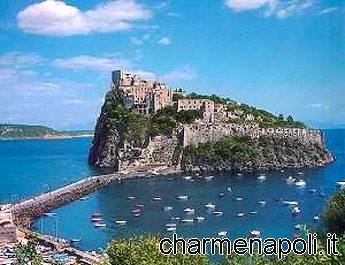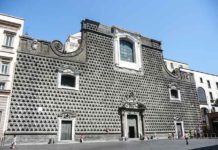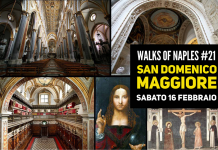With its lush green vegetation, blue crystalline waters, beautiful bays and mysterious caves, Ischia is a multifaceted wonder of nature and an ideal holiday destination waiting to be discovered on board one of the characteristic three-wheeled, open taxis or by boat. Its fantastic beaches, locations used in dozens of films and immortalised in the works of writers like Montale, Morante, Pasolini, Twain and Verga, are mostly accessible on foot but many can only be reached from the sea, and the boat trip is a breathtaking experience. Lovers of sunbathing in heavenly locations with splendid views and clear waters are spoilt for choice on Ischia. In the south-eastern municipality of Barano is one of the most beautiful jewels on the island’s coast: the bay of San Pancrazio, a delightful, glittering cove with a pebble beach accessible only from the sea beneath rugged cliffs – ideal for snorkelling. Not far away is the sublime landscape of Scarrupata di Barano, the remains of an almost perpendicular lava flow that ends in a beautiful pebble beach. The wild and uncontaminated north-western shore of Lacco Ameno is home to Aplysia, a sea mollusc known locally as monache di mare which explains the name of the sandy [charme-gallery]Spiaggia delle Monache beach at the foot of Mount Vico. Other superb beaches include the sandy shores of Lido at Ischia Porto, Spiaggia dei Pescatori at Mandra, and Muro Rotto or the Siren’s Beach at Pontano, whose shallow waters are ideal for a relaxing swim. Sailing past the Aragonese castle you reach the Scogli di Sant’Anna rocks with the famous Guevara tower where the great artist Michelangelo is said to have stayed and, a little further, the chapel of Sant’Anna, where the island’s most celebrated religious festival is held. One of Ischia’s most beautiful beaches is Spiaggia dei Maronti, three kilometres of sand enclosed by rocky hills in which the ancient Romans built a thermal pool. Near the village of Sant’Angelo are the volcanic fumaroles that heat the waters of the Spiaggia delle Fumarole beach and allow visitors to cook food simply by placing it in the sand. A similar phenomenon is found in the Bay of Sorgeto near Forio, a unique cove that can be reached by boat or down a long flight of steps from the village of Panza. Forio also boasts the beautiful beach of Citara, named after Venus Cytherea the goddess of beauty, a fitting epithet for such a beautiful setting. [charme-gallery]According to legend, the rocks just off the coast are the boats of the Phaeacians that Poseidon turned to stone because of the help they had offered Odysseus. San Montano cove near Lacco Ameno, with its lush, almost tropical vegetation and shallow waters makes it ideal for young families, a featured shared by Chiaia beach. Cava dell’isola in the tufa promontory on the other side of the island, also known as “The Nudists’ Beach”, is particularly popular with young people from Italy and abroad. Ischia Ponte and Casamicciola Terme are just a short distance away, where the legendary and relaxing “Spiaggia degli Inglesi” beach can be reached by climbing down a steep flight of steps. A similar atmosphere can be enjoyed at the historic beach of Cartaromana, an enchanting bay with hot springs that was used as a harbour by the Imperial Roman fleet. Just outside Casamicciola Terme is the delightful Bagnitiello, a rocky cove rich in hot thermal waters said to be the tears of a demigod. Returning to Barano, between Punta del Lume and Punta Parata is a cave that has had various names over the centuries: The Wizard’s Cave, the Silver Cave and the Cave of the Sun. Fishermen claim the cave was the home of a bearded giant but here archaeologists found traces of a Neolithic temple dedicated to sun worship. In nearby Lacco Ameno, the remains of a flooded cave are said to be the place (Cave of Marius) where Roman general Gaius Marius and his men hid from his eternal enemy Sulla 2000 years ago.

 Italiano
Italiano














